Results 41 to 50 of 290
-
01-28-2012, 11:11 PM #41
 Re: History of Cebu Interesting Story
Re: History of Cebu Interesting Story
-
01-28-2012, 11:21 PM #42
 Re: History of Cebu Interesting Story
Re: History of Cebu Interesting Story

Universitatis Sancti Caroli or University of San Carlos
Founded in 1595 by Jesuit Fathers Antonio Sedeño, Pedro Chirino, and Antonio Pereira as the Colegio del San Ildefonso. In 1725, its first campus in Martires Street (now M.J. Cuenco) was completed. In 1769, the school was closed after the Jesuits were expelled from the Philippines. The school however reopened in 1783 under the care of Bishop Mateo Joaquin de Arevalo and was renamed Colegio-Seminario de San Carlos. The management was turned over to the Dominican Fathers in 1852, then to the Vincentian Fathers in 1867. In 1930, its campus was transferred to the present site at P.Del Rosario Street and management was eventually turned over to the Society of the Divine Word (SVD).
-
01-28-2012, 11:40 PM #43
 Re: History of Cebu Interesting Story
Re: History of Cebu Interesting Story
too many to mention pa guyd pero ugma nalang w/ pictures para interesting.. wish to visit these places sooner from North To South..
Last edited by Engineering; 01-28-2012 at 11:43 PM.
-
01-29-2012, 06:35 AM #44
 Re: History of Cebu Interesting Story
Re: History of Cebu Interesting Story
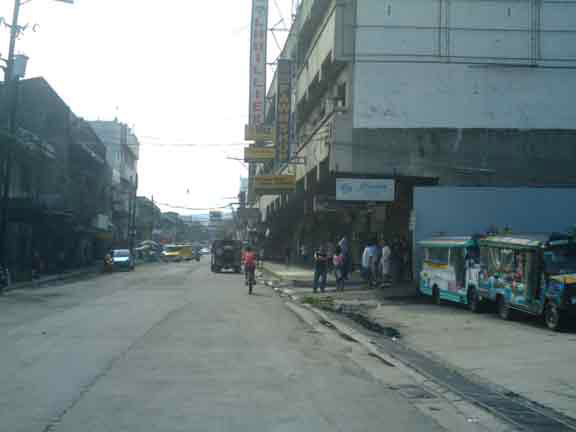
Toribio Padilla known as T. Padilla St.
The T. Padilla Street passes through the Lahug River from Sikatuna and ends in Martires. The Street was named after Father Toribio Padilla who was the brother of the Katipunan Vice-President in Cebu, Candido Padilla.
He was a generous parish priest of the old Cebu Cathedral from 1893 to 1898. When war broke out on April 3, 1898, all priests were asked to take shelter at the fort. However, Fr. Padilla refused and opted to stay at the convent alone. He was placed by the Spaniards under house arrest at the Colegio Seminario de San Carlos after being suspected as a Katipunero chaplain here in Cebu.

Candido Padilla known as C. Padilla St.
The busy district of San Nicolas was, in 1887, one of the oldest and flourishing towns in the island of Cebu. One of its memorable sons was Candido Padilla who began as a Cabeza de Barangay and was Capitan Municipal when hell broke loose in 1898.
When a secret chapter of the Katipunan was organized here in Cebu, Candido Padilla was the first president. Being the leader of the resistance movement, he appointed Pantaleon Villegas (a.k.a. Leon Kilat) to head the local uprising. As the series of skirmishes with the Spanish troops unfolded, some influential residents of San Nicolas connived with the Spaniard that eventually led to the capture of Padilla in Buhisan and his imprisonment at Fort San Pedro for two months. Before his execution, he was given permission to visit the Santo Niño at San Agustin church. He was executed by a firing squad in the old cemetery at Careta after being found guilty of treason by the Spanish Military Tribunal.
In 1902, the Municipal Council of Cebu passed a resolution naming the street from Kalunasan River to Tres de Abril as C. Padilla in honor of his heroism and brave acts. Today this road passes through Carlock, Figueroa, J.M. Basa, Tuti and Lakandula.

Don Solomon Manalili known as MANALILI STREET
Manalili sreet is located near Plaridel Street and Magallanes. It is one of the places in Cebu City where you can buy stuffs like shirts, dresses and accessories for very affordable prices. Usually, during daytime, this street is filled with people because they go to this area to buy things that they need for low prices.
This street was named after Don Solomon Manalili who was born to a rich family in Cebu. When hostilities broke out between the Cebuanos and the Spaniards, Manalili was assigned by Gen. Maxilom to the Guadalupe sector of the local insurgency movement.
His death under the hands of the Spaniards had been shrouded in mystery. Some believed that he was taken to Tuburan and killed in front of the churchyard. Others said that Spanish captors made him dig his own grave.
Marcial Velez known as M. Velez Street
The street was named after Marcial Velez, the oldest child of Jacinto Velez and Josefa Climaco. Being known at the time as an intense nationalist and a patriot he was intensely despised by the Spaniards. To escape from the wrath of the Spaniards he fled from Cebu.
With the American occupation of Cebu on February 22, 1899, he went to the mountains of Sudlon and organized a guerilla unit. He and his men fought a brave but losing fight. In January 1901, his parents and two sisters were exiled to Hongkong.

Don Gregorio Sanciangko y Gozon known as SANCIANGKO STREET
Sanciangko street runs westward from D. Jakosalem passing through Junquera, Pelaez, Juan Luna, Leon Kilat, J. Climaco, the former Philippine ailway and ends at Tres de Abril.
The street was named after Don Gregorio Sanciangko y Gozon, a famous Filipino lawyer who was born in Malbon, Rizal. He worked with famous people and was one of the advisers of President Emilio Aguinaldo. He was also the first Filipino to become doctor of Law in the Central University of Madrid in Spain. As a writer he published his famous EL PROGRESO DE FILIPINAS which Dr. Rizal highly praised. Accused of having connections with people who were trying to start a revolution in Manila, he was exiled to Lingayen, Pangasinan.
He was known as the First Filipino Economist and died on November 17,1897.
Now I know.
-
01-29-2012, 06:57 AM #45
 Re: History of Cebu Interesting Story
Re: History of Cebu Interesting Story

Cristobal de Colon known as Colon Street
Colon street is the oldest street in the entire Philippines. The people who established the first seat of the Spanish Government here in the Philippines, like Adelcantado Don Miguel Lopez de Legazpi and Hugo H. Miller, resided here in Colon Street. Spanish grandeur on this side of the country was last seen when the Japanese occupation forces destroyed the old Spanish brickhouses that were built on both sides of the streets during the last world war.
Concrete buildings of modern designs line up in Colon street, which starts from the historical Tres de Abril and ends at Mabini Street. It used to include the Philippines Railway, which is now defunct.
The street was named after Cristobal de Colon, a seaman and navigator who is otherwise known as Cristopher Columbus by English-speaking people. Although this self-educated man was born in Genoa, Italy, his poor but industrious parents were Portugese. His famous discovery is of the New World on October 12, 1942. He died in Valladoeid, Spain in 1506.

Governor General Inocencio Junquera. known as JUNQUERA STREET
The Junquera Street was named after Governor General Inocencio Junquera. He was responsible for the construction of Teatro Junquera, the first house of entertainment in Cebu. Governor General Junquera opened the street leading to this theater he constructed. He decided to build this theater after watching a Spanish play in a small convent in Parian. However, plan for its construction did not go smoothly. The friars made it difficult for him to push with the plan through the collection of higher taxes and putting their own monument on Junquera's planned site. This is largely due to his liberal and anti-friar background.
Junquera continued with the project in another location on a land owned by Rafael Veloso in Barrio Kanipaan in downtown Cebu. The theater was completed in 1895 and was named Teatro Junquera. On that same year, he left the Philippines and turned over the management of the theater to his nephew, Joaquin Hernandez Junquera, and Florentino Rallos. In 1913, the theater became a cinematograph called "Cine Oriente". Unfortunately, it was destroyed during World War II.
Junquera Street passes through Sanciangko, P. del Rosario, R. R. Landon, and ends at F. Ramos.

Miguel Lopez de Legaspi known as LEGASPI STREET
Legaspi Street winds its way from Colon and ends at the proposed Cebu-Mandaue Boulevard. This street of Cebu City is named after Miguel Lopez de Legaspi, the first Spanish Governor of the Philippines appointed by the King of Spain. Legaspi arrived in the island on April 27, 1565, the anniversary of Magellan's death. The first settlement in the Philippines was built after he signed the treaty of peace with Rajah Tupas of Cebu, son and successor of Humabon. Legaspi called the town San Miguel, in honor of the saint after whom he was named. Legaspi built the Fort San Pedro and Pari-an, the Spanish residential section.

Fernando Magallanes or Ferdinand Magellan known as MAGALLANES STREET
One of the earliest but well-preserved roads ever built in Cebu is the Magallanes Street. The early Spanish colonizers named it after the Portuguese explorer who discovered the Philippines, Fernando Magallanes or Ferdinand Magellan, who sailed in the interest of King Charles V of Spain. This street, which passes through the Magellan's Cross, a symbol of Christianity, begins from Forbes Bridge and ends at Plaza-Independencia.
THE CROSS OF MAGELLAN
From time immemorial this spot has been set aside to commemorate the erection of a cross in Cebu by the expedition of Magellan, when King Humabon of Cebu and his queen, son, and daughters, together with some eight hundred of their subjects were baptized by Father Pedro Valderama. This hallowed site was improved in 1735 by Reverend Juan Albarran, prior of San Agustin and in 1834 by Rt. Reverend Santos Gomez Marañon, bishop of Cebu. The image of Sto. Niño found by the expedition of Legazpi in a house near the present site of the Cathedral of Cebu is venerated by the faithful in the memory by church of San Agustin.
Magellan's Cross is an important historical landmark in Magallanes Street. It is part of the precious history of our country.
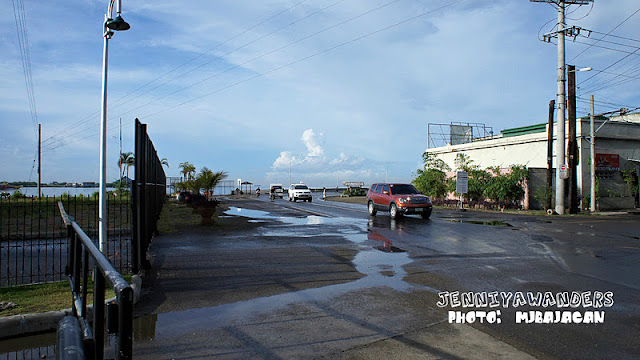
Francesco Antonio Pigafetta known as A. PIGAFETTA STREET
This street was named after Francesco Antonio Pigafetta. He was born in Vicenza, Italy in 1491 and also died there in 1535. He became a historian and a navigator. He was a volunteer who recorded all the events in Magellan's expedition. He also kept a record of his personal observations. He wrote a dictionary of the dialects of the nations he visited.
In A. Pigafetta Street, a monument of Francesco Antonio Pigafetta can be found. An inscription on the metal engraving of the monument reads:
ANTONIO PIGAFETTA (1496-1535) PATRICIAN OF VICENZA, ITALY AND KNIGHT OF MALTA, CHRONICLER OF
THE MAGELLAN EXPEDITION THAT FIRST CIRCUMNAVIGATED THE GLOBE FROM 1519 TO 1522. HE FOUGHT IN
MACTAN AND WAS ONE OF THE 22 SUR- VIVORS WHO RETURNED TO SPAIN. THIS TRIBUTE WAS ERECTED BY THE PHILIPPINE ITALIAN ASSOCIATION. 1980
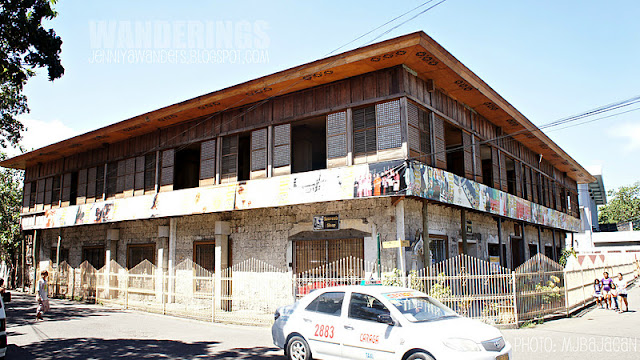
Andres de Urdaneta known as URDANETA STREET
Andres de Urdaneta (1498-156 , was one of the six priests who went with the fleet under the command of Miguel Lopez de Legazpi in the colonization of the Philippines. His being a chief navigator and spiritual leader of the force contributed greatly to the successful establishment of the first settlement in Cebu.
, was one of the six priests who went with the fleet under the command of Miguel Lopez de Legazpi in the colonization of the Philippines. His being a chief navigator and spiritual leader of the force contributed greatly to the successful establishment of the first settlement in Cebu.
In 1565, Legazpi tasked him to find a different route to New Spain and to spread the news of the settlement of Cebu. He died in Mexico on June 30, 1568, three years after helping Legazpi win control over Cebu.
Main text area
Urdaneta played a great role in the founding of Cebu and for that reason, the Cebuanos named one of their streets in his honor. Urdaneta street begins from Burgos and ends at Martires, passing through Logarta and LapuLapu streets thereby reminding us that at one part of our history, such a person set foot on this island.
now i know?
-
01-29-2012, 07:11 AM #46
 Re: History of Cebu Interesting Story
Re: History of Cebu Interesting Story
Juan P. Gorordo known as GORORDO AVENUE
Juan P. Gorordo (1862 - 1934) was the first Filipino Bishop of Cebu during the American Regime. He was born in Barili, Cebu, to Juan Bautista Gorordo of Viscaya, Spain and Telesfora Garces of Cebu. He was brought up as a Catholic and entered the seminary at the age of 9. By 12, he took up Latin and the humanities, philosophy then theology and morals. Later, Juan Gorordo was made a professor of 2nd year Latin. Among his students were Filemon Sotto, Marcelo Regner, Miguel Abad, Cepriano Zosa, Eulogio Acebedo, Andres Abellana and others.
Juan Gorordo was ordained priest at the age of 23 and was assigned as coadjutor of Opon. Later, he transefered to San Nicolas. By 1907, he was named auxiliary bishop of the Diocese of Cebu then bishop of Cebu by Thomas Hendrick, an American bishop, in 1910. He finished the construction of Cebu Cathedral, built the Sto. Rosario Church, convent and dormitory of Colegio de San Carlos in P. del Rosario St. He died at the age of 72.
Bishop Gorordo donated 54 hectares of land for the Eversely Childs Leprosarium in Jagobiao. For his missionary passion, the modern, wide and well kept street from General Maxilom up to Lahug was named Gorordo Avenue.

Julio Rosales y Ras known as CARDINAL ROSALES Avenue or cebu business park
Cardinal Rosales Street was named after Julio Rosales y Ras. He was born on September 18, 1906 in Calbayog, Philippines. He was ordained on June 2, 1929 and was elected as the first bishop of Tagbilaran City, Bohol on June 29, 1946. He was consecrated on September 21, 1946 in Palo, Leyte by Guglielmo Piani, titular archbishop of Nicosia, apostolic delegate in the Philippines, assisted by Manuel Mascariñas y Morgia, bishop of Caceres, and by Miguel Acebedo, bishop of Calbayog. Archbishop Rosales was the President of the Episcopal Conference of Philippines.
Arch. Rosales was created cardinal priest in the consistory of April 28, 1969; received the red biretta and the title of Sacro Cuore di Gesù a Vitinia, April 30, 1969. He attended the II Vatican Council, 1962-1965 and the III Ordinary Assembly of the World Synod of Bishops, Vatican City, September 27 to October 26, 1974. He participated in the conclave of August 25 to 26, 1978 and also the conclave of October 14 to 16, 1978. He attended the I Plenary Assembly of the Sacred College of Cardinals, Vatican City, November 5 to 9, 1979. He resigned from the pastoral government of the archdiocese on August 24, 1982. Arch. Rosales died on June 2, 1983 in Cebu. He was buried in Metropolitan Cathedral, Cebu.
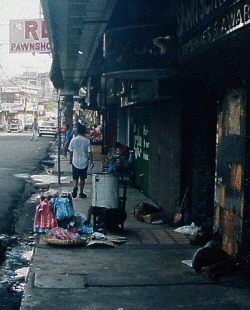
Father Pedro Pablo Pelaez known as PELAEZ STREET
Pelaez street runs through P. del Rosario and Sanciangko from R. R. Landon and stops at Colon. This street was named in honor of Father Pedro Pablo Pelaez (1812-1863), a treasurer of the archbishopric and capitular vicar of the diocese of Manila. He founded a newspaper where he bravely exposed his views regarding the question of secularizing the parishes in the islands against the opposition of the Spanish friars, the El Catolico Filipino. Because of this, he was named as the "Father of Secularization."
Father Pelaez was the son of a well-known and respected family in Laguna. Though his parents died at an early age, he received his Bachelor of Philisophy degree at the age of seventeen and at the age of twenty-one, his Bachelor of Theology.
In 1863, a violent earthquake which destroyed the Manila Cathedral ended Father Pelaez's life. He was buried beneath the ruins of the cathedral while praying before the altar.
These are the priests during Spanish times.
Now I know.
-
01-29-2012, 07:30 AM #47
 Re: History of Cebu Interesting Story
Re: History of Cebu Interesting Story
next is the propaganda. I will not mention nalang cguro The Panganiban St. , Balagtas St. , El Filibusterismo St. , Ibarra St., Isagani St., Noli Me Tangere St., Palma St., Simoun St., & V. SOTTO STREET.
because these STREETS OF PROPAGANDA was name after them in the early 1880's, just as the European powers were completing and consolidating the colonial division of Asia, a growing number of students from one of the oldest European colonies in Asia began making their way first to the universities of Spain and then to the other countries of Europe. These young Filipinos,already imbeud with the stirrings of nationalism within their own country, that their aspirations soar as they were plunged into the full-flowing currents of liberalism and nationlism sweeping through Western Europe.
As strangers in a foreign land,these groups of Filipinos found themselves drawn together too in a new unity of Barcelona and Madrid, and later in other Western capitals of Western Europe. Here they discussed the problems of their native land and the hopes they entertain for its future. These propagandists were remembered as those who dedicated their lives and works fro the betterment and reformation of our country.
later napud kay mag breakfast sa ko.
-
01-29-2012, 07:48 AM #48
 Re: History of Cebu Interesting Story
Re: History of Cebu Interesting Story
Ok magsugod napud tah hehe

STREETS OF THE NATIONALS mentioned: Bonifacio St., Dimasalang St., Juan Luna St., Lopez Jaena St., Mabini St., & Plaridel St. These streets honor and justice is what our heroes fought for. They were Filipinos of great courage and determination who sacrificed their lives for the freedom of our native land.
Some of our streets were named in honor of these significant personages that were part of the Philippine history. Each one of them dedicated the greater part of their lives by doing noble work for their countrymen and for the good of our beautiful country.
These people fought for what they thought was right. They fought through their own ways, like Dimasalang who believed that the pen is mightier than the sword, Bonifacio who fought tooth and nail along with the Katipuneros for the freedom that was deprived from the Filipinos. Without these people, the Philippines would never be the same.
As we walk through these streets, let us recognize these Filipinos who selflessly sacrificed their lives for the independence of our beloved Philippines.
-
01-29-2012, 08:02 AM #49
 Re: History of Cebu Interesting Story
Re: History of Cebu Interesting Story
Our history is full of significant events that highlights our Cebuano heritage. Such events mark the land, as well as our lives, with people who fought the conqueror bravely even sacrificing their lives for the land that is Cebu. They died knowing that their death will bring about the much besotted independence and that they died for something they truly loved, an idea and a society worth dying for. They staged their fight, in strategic places advantageous to them and in the process of imprinting their names, lives and even the date of that place where they fought and breathed their last. Among very famous places where such events took place are the Balintawak Street, Katipunan Street, Sudlon Street and Tres de Abril Street. Such places will remain etched in our minds and hearts and forever embedded in the glorious history of CEBU.

BALINTAWAK STREET
The street was named after the Revolution of the Filipinos named "The Cry of Balintawak" during the Spanish regime which was led by Andres Bonifacio--the Supreme leader of Katipunan.
On August 26, Bonifacio assembled the leaders and hundred of comrades-in-arms in the hills of Balintawak, north of Manila. In an emotion-laden ceremony, the fighters tore their residence certificates to symbolize the termination of their loyalty to Spain while shouting the battle cry: "Mabuhay ang Pilipinas!" The event went down in Philippine history as the "Cry of Balintawak" and is regarded as the starting signal for the Philippine revolution.
The Cry of Balintawak was really a great event that demonstrated the Filipino desire to be released from the hands of the Spaniards. In recognition of that historic event, a street located near Colon was named after it.

KATIPUNAN STREET
The Katipunan street in Labangon as we know today, was named after the Filipino organization who fought the Spaniards to restore the freedom of the Filipino people. The street in Labangon has been named after it as a reminder of the historic meeting of the local brave warriors of Cebu as they plan for an uprising during the Holy Week that was later to be known as the Lenten Uprising.
About 103 years ago, a secret meeting at the sugarcane fields of Jacinto Pacaña in Labangon was held to map out plans for the Katipunan uprising in Cebu. The group decided to do the the uprising on April 8, a good Friday when Spanish soldiers would be forbidden from carrying bullet cartridges attached to their rifles in deference to the Holy Week observance. The ones present during the meeting aside from Pacaña were Francisco Llamas, Luis Flores, Candido Padilla, Nicolas Godinez and Eugenio.

SUDLON STREET the National Park of Cebu
Sudlon became the refugee of the Cebuano warriors after the death of Gen.Leon Kilat. The Cebuano warriors found out about the Spaniards’ plan of smoking them out of the cave, and so they moved again. They went to the woods and hid on the caves. For about a week they stayed there braving possible encounters with the enemy until an ally came along: Rafael Tabal of Sudlon, with his family members and relatives and followers, offered the katipuneros in the mountains of Sudlon.
The forces, as the Katipunan leaders agreed, were concentrated in Sudlon. There were other areas of operation and KKK officers and soldiers were sent there after the whole plan was set and approved by the movement.
Besides sharing properties and what they had saved in their previous areas, the warriors in Sudlon also came up with ways for sustainability. They implemented the revolutionary cedula, surely the official identity document of the Katipuneros and allies all over Cebu that countered the Spanish cedula.

TRES DE ABRIL STREET
The street was given the name "TRES DE ABRIL" during the celebration of the Philippine Centennial independence. Many Cebuano Katipuneros shed their blood and sacrificed their lives to free the Philippines from the oppression of the Spanish colonizers.
The Tres de Abril celebration honors the anti-Spanish Revolution in Cebu and the revolutionaries who took part in the revolution. In particular, this commemorates the first armed resistance between the Spanish forces and the Katipunan in Cebu- "the first shots of the Revolution" in the province. This plot took place in the afternoon on April 3, 1898 on Calle Valeriano Weyler - When a group of some 80 Cebuanos engaged in battle with the Spanish guardia civil. The revolutionaries - many of them coming from the district of San Nicolas, were led by Pantaleon Villegas(Leon Kilat) and Luis Flores.
The Tres de Abril encounter left four of the Spanish forces and two Katipuneros killed. The guardia civil were sent back to seek refuge in Fort San Pedro after running skirmishes with the revolutionaries in the streets of the city. The Cebuano revolutionaries took absolute foothold of the city from April 4 to April 6 until Spanish reinforcement arrived.
The Tres de Abril event marked the culmination of a period of organizing and agltation for Philippine Independence and an end to Spanish Regime. It also led to futher struggle that eventually led to the country's liberation and freedom.
Now I know.
-
01-29-2012, 08:23 AM #50
 Re: History of Cebu Interesting Story
Re: History of Cebu Interesting Story
The STREETS OF THE RAJAHS a tropical and lush island would not maintain its peace and orderliness without the rule of a chieftain. These chieftains, called rajahs, were brave and just leaders of their territory. A rajah had wide powers, for he exercised all the functions of the government.
The primary duty of a rajah was to rule and govern his subjects and to promote their welfare and interests. He was the executive, the legislator, and the judge. Naturally, he was the supreme commander in time of war.
Rajahs played a great role during the Spanish invasion in the Philippines. Some of these great rajahs sided and fought the Spaniards. They were Lapu-lapu, Sikatuna, Tupas and Lakandula.
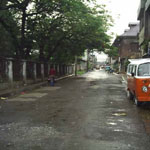
LAKANDULA STREET
One of the numerous streets of the San Juan Nicholas district is Lakandula. Starting from Tupas, Lakandula crosses Espeleta, C. Padilla and B. Aranas, ending at Tres de Abril.
Lakandula was the most respected native chief by the Spanish "conquistadores." Lakandula ruled Tondo, one of the most important territories in Luzon, when Legazpi visited their place to offer friendship.
Lakandula made a treaty with Legazpi and helped him construct houses, a church, a convent and a fortress equipped with 14 guns and 12 jars of powder.
In 1574, he gathered his warriors and revolted against the oppressive Spaniards. The dispute worsened with the attacks of a Chinese pirate named Limahong.

LAPULAPU STREET
Lapulapu Street was named in honor of Lapu-lapu, a famous hero of Mactan. Lapu-lapu (1491 - 1542) was one of the first leaders of Mactan. He was also known as Kolipulako and was regarded as the first local chieftain who resisted the Spanish Colonization at that time; thus making him the first National hero of the Philippines.
Others have named him as hero of Mactan and conqueror of Magellan. He was described as stern, proud, intelligent, and humble. He waged a continuous war against the powerful ruler of Cebu, then a very greater kingdom than his little island of Maktang. During the battle of Mactan, he and his men died. In his honor, the Cebuano people have erected a statue and church in Mactan Island and also renamed the town of Opon in Cebu to Lapu-Lapu City.

SIKATUNA STREET
Sikatuna street begins from D. Jakosalem and ends at the intersection of España, Zulueta, and Mabini. It passes through San Jose, General Sepulveda, General Echavez, Zapatera Elementary School, Imus, T. Padilla, Bonifacio, and Isagani streets. This old, narrow, winding street reminds the Filipinos of the chief of Bohol who saw the advantage of a friendly understanding with the Spaniards and the new civilization that Spain could doubtlessly introduce into the islands.
An ancient Filipino ceremony known as the "sandugong panaginip" was performed between the expeditionist Legazpi and Raja Sikatuna. Both slightly slashed their arms, allowing a few drops of blood drip down to the ceremonial wine which they both drunk as a sign of sincere friendship. This was enough to persuade the natives that the Spaniards had noble intentions towards them and their land. Of Sikatuna, one writer comments:
"Sikatuna did more than pledge friendship to the Spaniards, however, it was he who restored the faith of the natives in Legazpi and his men after the Portuguese, pretending to be Spaniards, committed atrocities by killing many natives, burning towns, and looting."
It is said that several of Legazpi's expeditions were made possible through the guidance of Sikatuna.
< no picture of Tupas Street wala lage ko katultol ani >
>
TUPAS STREET
Rajah Tupas, the son of Rajah Humabad, was the heriditary ruler and chieftain of Cebu when Miguel López de Legazpi set foot on this island. In April 27, 1565, he was defeated by Legazpi's soldiers which ended his rule.
Rajah Tupas already expected the Spaniards to come on their shore. His warriors were grouped in full battle array, ready to fight and resist Legazpi and his invaders. A priest named father Urdaneta tried to negotiate with them but was not able to convince the King. With this decision, Legazpi initiated the attack. While the Spanish ship's artillery were firing the coast, the other Spanish soldiers landed and attacked the Cebuano warriors. Rajah Tupas and his warriors were forced to surrender and retreat to hills because they were no match to the superior weapons the Spanish soldiers had. The city was burned then rebuilt and was named Villa del Santisimo Nombre de Jesus.
With this defeat, RajahTupas was now interested to enter into treaties especially peace negotiations. A Mohammedan Malay named Cid Hamal who stayed in Cebu at that time, helped Tupas draft a peace treaty on the fourth of June 1565. In this treaty, he recognized the Spanish king as reigning king and he also agreed to pay tribute and in return, Legazpi promised protection against his enemies and allowed trade to flow between the Filipinos and Spaniards. With this, Legazpi was granted a strategic site by the Spanish King on Cebu and this became the first permanent Spanish settlement in the Philippines.
Advertisement
Similar Threads |
|







 Reply With Quote
Reply With Quote
